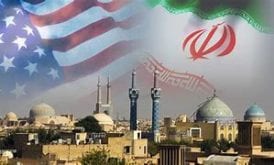Iran-HRM – The Iranian regime’s maritime forces opened fire on a group of fule traders, killing a young man in a southern Iranian port on March 12 and pursued other boats that fled the area.
Folowing the fatal shooting of Baluch fuel traders, angry locals staged a protest gathering near the Strait of Hormuz in southern Iran on Friday. The protesters burned several security force boats.
According to reports Mehdi Raisi was the fuel trader killed by the regime’s maritime forces. He suffered a direct gun shot wound to his head and died.
A photo of 31-year-old Mehdi Raisi, the fuel trader killed by the regime’s maritime forces on Friday. He suffered a direct gun shot wound to his head and died.#Iran #HumanRightsViolations pic.twitter.com/9kH4ZlCQt1— IRAN HRM (@IranHrm) March 13, 2021
Fars news agency affiliated with the Islamic Revolutionary Guards Corps (IRGC) quoted Hormozgan border commander Hossein Dehki as saying guards shot and killed a 31-year-old resident of nearby Sirik while trying to apprehend boats engaged in smuggling.
Another man identified as Rashed Torkanami was wounded in the leg.
Locals who had gathered to protest the shootings in Kuhestak Port were also shot at by security forces.
Reports from local sources indicate that the regime has sent reinforcements from other towns to crack down on the volatile port. Internet connections were also either severely disrupted or cut off in the area.
This is not the first time that the killing of Baluch fuel traders sparks protests in southern Iran. The IRGC has sought to crack down on informal trade in the area. In late February Saravan and other numerous cities in neighboring Sistan and Baluchistan province were scenes of protests and clashes among locals and security forces after the IRGC opened fire on fuel traders at the Iran-Pakistan border. Over 40 civilians were killed and several dozens injured by the regime’s forces who opened fire on their rallies.
The people who are being labeled “smugglers” and drawing deadly responses from authorities are poor locals who, due to lack of job opportunities, are forced to carry fuel across the border to make ends meet.
The Razzaq plan
The border was closed on February 22 according to the Razzaq Plan as a way to “organize” fuel carriers, state-run media said.
In the plan, run by the IRGC, locals living in a 20-kilometer radius of the border are allowed to buy fuel and transport it across the border to sell. This is while many fuel carriers are impoverished people living on the outskirts of small towns more than 20 kilometers from the border. Only those with an IRGC-approved ID card can transport fuel across the border and those who are not registered become easy targets for the regime.
Many believe that the IRGC sees fuel carriers as a rival and that the new plan is a way for the IRGC to monopolize the selling of fuel to score a profit.
Due to the growing economic crisis in Iran and sanctions, the Iranian regime needs large-scale financial resources for its warmongering and terrorist activities in the region.
The IRGC is also notorious for its role in the trafficking and distribution of narcotics inside and outside of Iran, which has now become the focus of international attention.
 Shabtabnews In this dark night, I have lost my way – Arise from a corner, oh you the star of guidance.
Shabtabnews In this dark night, I have lost my way – Arise from a corner, oh you the star of guidance.


